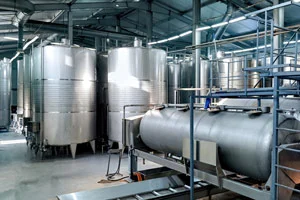Oxygen is vital when wine ages in oak barrels. One of its functions is that it is able to regulate both the physical and chemical processes that take place during that time. Therefore, it is particularly important to regulate the transfer of oxygen to the interior of the barrel. In fact, one of the greatest mysteries is knowing how much oxygen enters through a barrel. We’ll try to find the answer here.
How much oxygen enters through a barrel?
When making any wine, it is especially important to choose the right barrel. Factors that are usually taken into account are the type of oak, the degree of toast, and the type of barrel. However, one of the most important issues in determining the quality of the wine is the amount of oxygen that passes through the barrel.
Over the years, the work done by Ribereau-Gayón in 1931 and more recently by Vivas in 1997 has been applied. It is estimated that the amount of oxygen entering a hermetically sealed barrel ranges from 15 to 20 mL/L per year. This figure varies depending on whether the barrel is sealed or not, as well as in the month of the year.
In addition, it was detected that the amount of oxygen in new barrels is greater than in barrels that have been used before. Also, if a wooden bung is used to close the barrel, the amount varies from 8 mg/L per year (if the bung is on top) to 36 mg/L per year (if the bung is on the side). If a silicone bung is used, an airtight seal usually forms, and the amount is usually greater, at about 45 mg/L per year.
Recently, the UVaMOX team at the University of Valladolid detected the oxygen transmission rate in different barrels using a non-invasive measurement system, involving luminescent probes.
How does oxygen enter the barrel?
One question that often comes up is how oxygen enters the barrel and what affects this process. Air enters the barrel either through the wood or through the spaces between the staves. Here are some factors that affect oxygen entry into barrels:
- Handling. Whenever the wine is moved in the winery, the presence of air increases. The same is true during barrel filling.
- Conservation. Temperature and humidity also affect the presence of oxygen in barrels. Another factor is whether or not the closure is airtight.
- Botanical origin. Several studies have shown that French oak is more permeable than American oak.
- Thickness of the wood. The thickness of the wood also determines how air enters the wine.
- Barrel size. Barrel size is another factor that affects the entry of oxygen. This is because of the ratio of surface area per liter of wine.
- Barrel age. Over time, the barrel’s pores become clogged, more so at the bottom than at the top.
- Filling. Filling the barrel can cause a sharp increase in dissolved oxygen.
What are the benefits?
It is important to understand that oxygen is a vital element for both the production and conservation of wine. In fact, it plays a vital role from the moment the grapes are harvested until the wine is bottled. Its presence is therefore essential, but must be controlled.
This process is beneficial for the wine, since it has the effect of:
- Stabilizing color components
- Softening aggressive tannins
- Increasing aromatic complexity
- Reestablishing the electrochemical potential
- Reducing herbaceous odors
- Eliminating reductive aromas
Microoxygenation is a process that involves the controlled and timely addition of oxygen to the wine. It is important to note that this is a supervised process and not the inevitable entry of air into the barrel.
For advice on controlling and optimizing the microoxygenation process of wine, please contact us. After several years of research, Agrovin now offers highly precise oxygen measurement equipment that is easy to operate. The equipment makes it possible to carry out microoxygenation and/or macrooxygenation treatments. Click to learn more!


